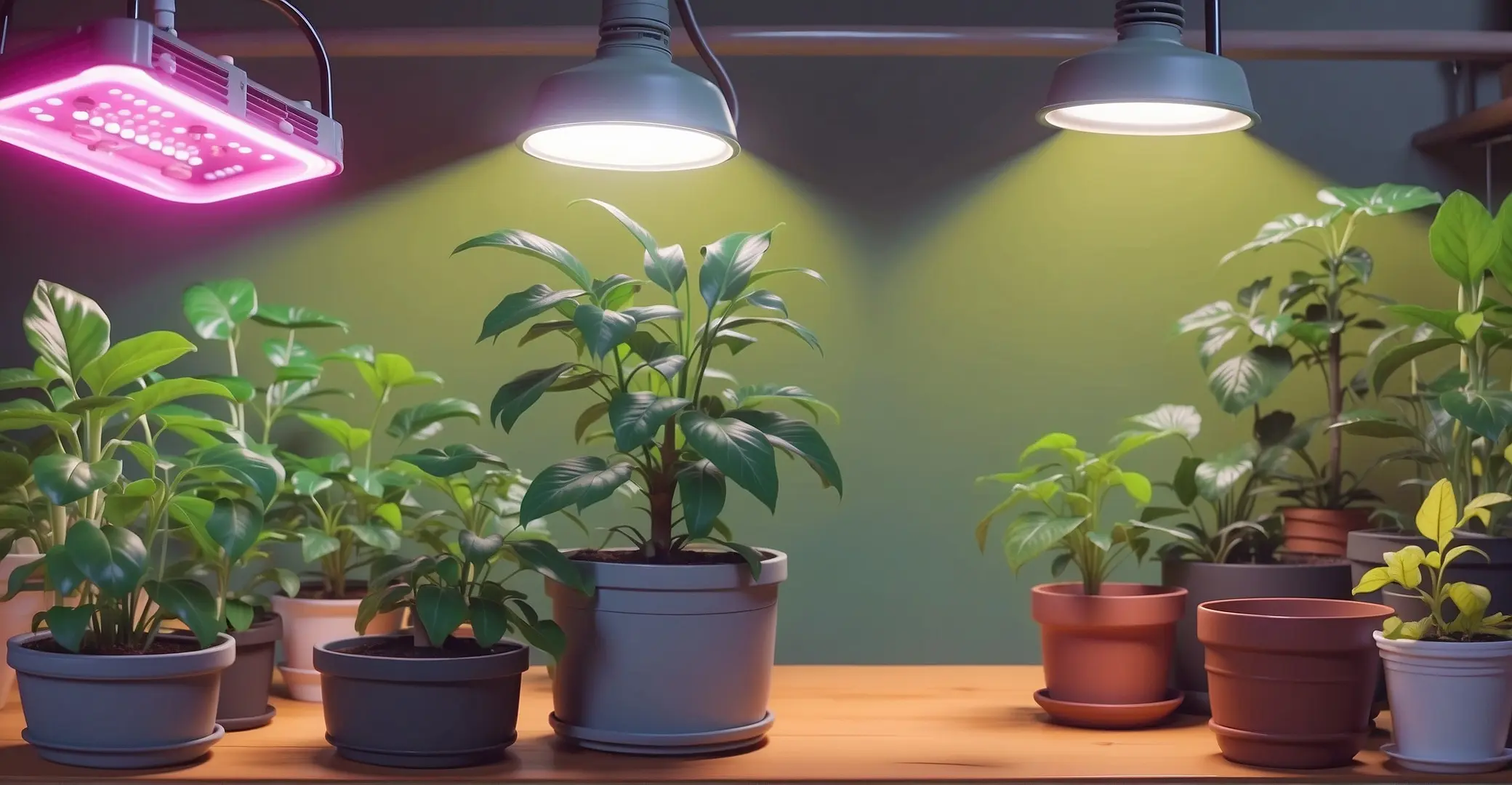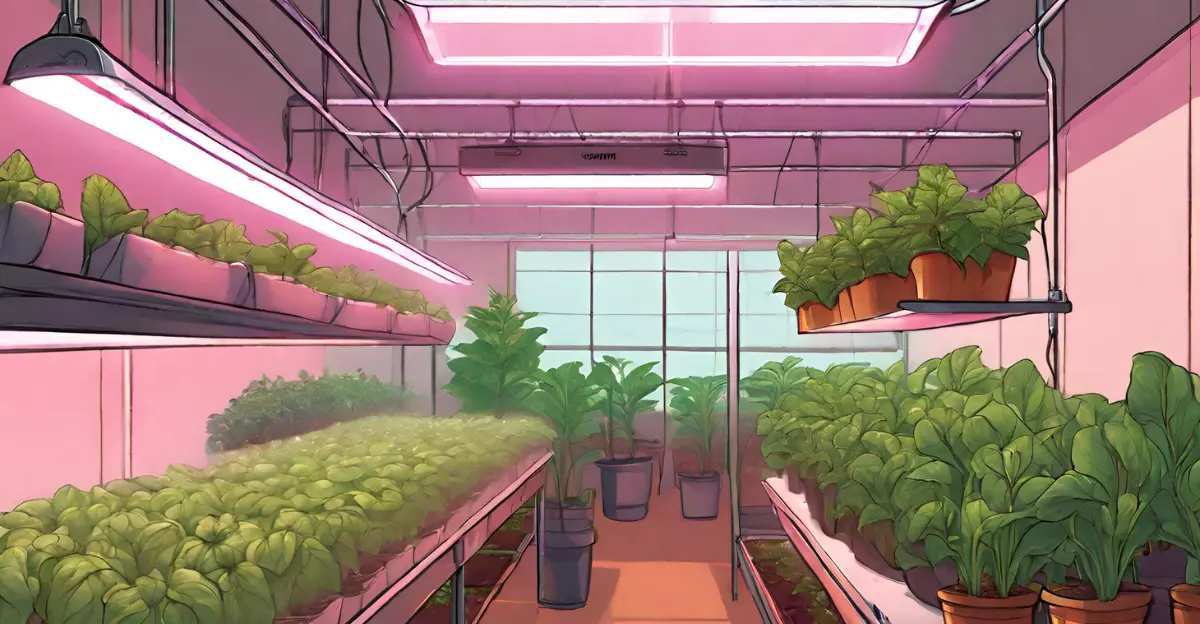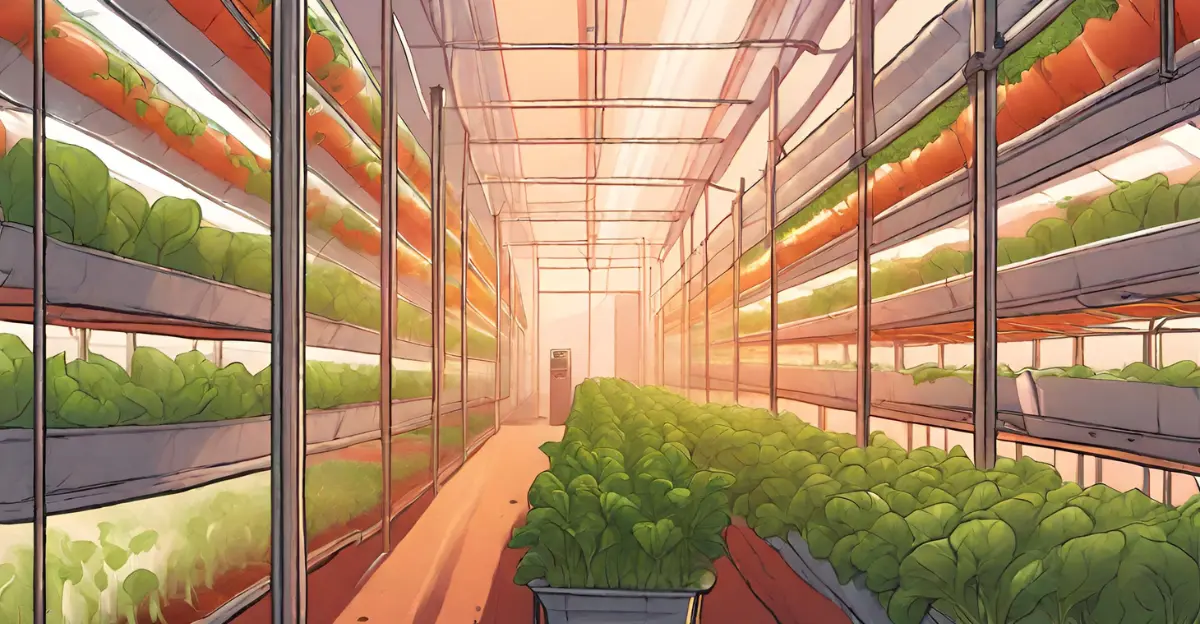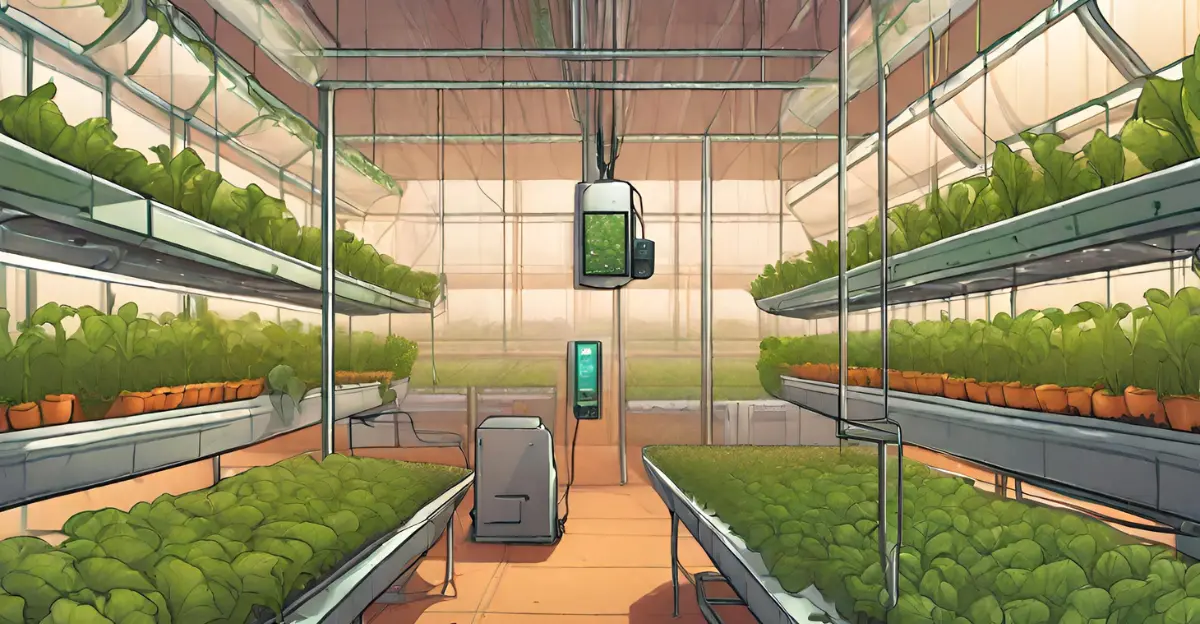HID vs LED Grow Lights: The In-Depth Comparison Guide (2024)

Let’s face it—interpreting all those complex specs between high-intensity discharge bulbs and LED panels is a major headache!
Lumens, spectrums, heat levels, costs—it made my head spin at first even after reading articles and watching videos.
So in this up-to-date guide, I’ll compare the latest HID bulb models versus top-rated LED fixtures across all the factors that matter most.
Most importantly, I’ll give straightforward, unbiased recommendations based on your specific plant varieties and cultivation goals to help determine if HID or LED lighting is ideal for your indoor gardening needs.
Let’s begin.
Quick Key Takeaways
How HID Grow Lights Work

HID stands for “high-intensity discharge” and refers to a specialized electrical gas-discharge light source often used for supplemental greenhouse lighting and indoor horticulture.
There are three main HID fixture types leveraged to grow plants:
1. Metal Halide (MH)
Metal halide lamps operate by igniting a mix of mercury and metal halide salts inside an arc tube using electrodes.
This produces a daylight spectrum from 4000K to 6000K (mimicking natural daylight), ideal for leafy greens and vegetative growth.
Typical light output spans 36,000 to 140,000 lumens while drawing about 100W per 4500 lumens. MH lamps last around 10,000 to 15,000 hours.
2. High-Pressure Sodium (HPS)
HPS lights utilize sodium, mercury, and xenon gases to emit a red/orange hue supporting flowering or fruiting. They are the staple for flowering cannabis.
A 600W HPS produces between 90,000 lumens, while a high-output 1000W fixture emits around 1,55,000 lumens. Efficiency ranges from 146 to 155 lumens per watt.
FURTHER READING: LED vs HPS Grow Light: Which Is Better for You in 2024
3. Ceramic Metal Halide (CMH)
This newer type of HID lamp offers higher efficiency. They are 10-20% more efficient than traditional metal halide lamps (source).
They also provide better spectrum control and longer 20,000-24000 hour lifespans than traditional designs (source).
The advanced CMH arc tube material and redesigned quartz bulb shape increase luminance. To give you an example, a 315W CMH model produces similar luminance as a 600W HPS.
How LED Grow Lights Work

LED stands for “light emitting diode”. LEDs are semiconductors that emit light when an electric current passes through them.
When the LED is switched on, electrons flow from the negative side (cathode) to the positive side (anode) of the semiconductor material.
As the electrons move through the semiconductor, they release energy in the form of photons or particles of light.
The color of the light depends on the semiconductor material used:
By combining LEDs of different materials, LED grow lights can emit the full-color spectrum that plants need for photosynthesis.
LED Chip Technology
LED chip materials like GaN, InGaN, and AlGaAs utilize quantum well structures to enable high conversion efficiencies and beneficial properties.
LED chip-on-board (COB) designs combine multiple LED chips for high lumens using little energy.
SIDENOTE: The performance of LED fixtures varies greatly. High-end models often have superior build quality, heat management, spectrum tuning, and advanced features compared to budget options.
Light Intensity and Canopy Penetration

When growing crops indoors, sufficient light intensity and penetration into the plant canopy are vital to maximize yields and quality.
HID and LED fixtures take different approaches here.
Output and Intensity
HID lighting provides intense illumination, with 600W high-pressure sodium (HPS) fixtures emitting 90,000+ lumens initially. 1000W models produce 150,000+ lumens.
However, outdated reflector designs waste a portion of this output.
LEDs couldn’t match HPS intensity initially. But new high-power white LEDs utilizing advanced optics and multi-chip arrays now rival or exceed HID luminance.
Top-tier 550W LED grow lights emit over, 2100 μmol/m2/s PAR, similar to 1000W HPS models.
Penetrating the Canopy
HID lamps radiate light in all directions, reaching lower leaves better than most LEDs. However, intensity still drops exponentially deeper into the canopy.
LEDs emit a focused beam, requiring secondary optics to broaden penetration at middle/lower sites.
Tuning spectrum and intensity promotes growth here instead. Intro-canopy LED arrays also intercept more light.
Properly laid-out LEDs now outperform HID setups in research trials.
For instance, pepper plants under LEDs were 11-99% taller, 4-45% wider, and had 25-143% greater dry mass than plants grown under HPS supplemental lighting.
Additionally, LED lighting could increase tomato lycopene content by 18% compared to HPS lighting.
So while high-quality HPS fixtures remain decent for penetration, targeted LED tuning gives better productivity and nutritional quality in most cases.
NOTE: With that said, LED fixtures have a higher upfront cost compared to HPS.
Energy Consumption and Cost Analysis
HID lights like high-pressure sodium (HPS) and metal halide (MH) generally consume more power than LEDs for equivalent light output.
A typical 400W HPS or MH (running at full power) draws about 465W-480W from the wall, while a comparable LED light would draw about 300W (source, source).
Over the same lifespan, LEDs consume about 40-60% less electricity than HID lights.
LED efficiency continues improving rapidly, while HID efficiency has largely plateaued. Newer LED models can match the intensity of older HPS/MH models while using even less energy.
Lifespan and Costs Over Time
HID bulbs typically last 1–2 years before needing replacement, while LEDs can last 3–10+ years with high-quality models.
Factoring in electricity savings and bulb replacement costs, LEDs become cheaper than HIDs after 2–3 years of equivalent use (source).
For example, replacing a $140 HPS bulb every 2 years costs $70 per year. An equivalent $500 LED that lasts 5 years costs $100 per year—and saves on electricity costs.
Additional Cost Considerations
LEDs produce less radiant heat than HIDs, putting less demand on air conditioning and ventilation. This can further reduce electricity costs in indoor farms.
The longer lifespan of LEDs also saves on labor costs associated with bulb replacements. HIDs take more time and effort to replace frequently.
LEDs can allow more precise control over the light spectrum for each stage of plant growth. While HIDs come in different color temperatures, the spectrum cannot be adjusted like LEDs.
Heat Emissions and Management

Temperature Management
SIDENOTE: However, there is no evidence HID infrared radiation directly worsens these problems. It likely does so indirectly by raising leaf temperatures.
KEY TAKE HOME: The advanced energy efficiency of quality LED grow lights allows them to run significantly cooler than HID lamps. Careful temperature control is still required, but heat is much easier to manage with LED lighting.
Installation, Maintenance, and Adjustability
When it comes to setting up and managing your indoor garden lighting over time, ease of use is crucial for any home cultivator.
Let’s compare how HID and LED fixtures stack up across key factors like installation complexity, bulb lifespan, and adjustability.
Installation
Right out the gate, LED lights are much simpler to install thanks to their modular, lightweight design.
A 600-watt HID fixture weighs around 15-20 pounds once all required accessories like ballasts and ducting are accounted for. Comparable 550-watt LED bars often weigh under 10 pounds in total.
This compact, all-in-one form factor speeds installation.
There’s also no need to wire up separate ignitors, capacitors, and cooling systems like HID globes require.
Winches allow height adjustment of entire LED panel sections instead of dismantling fixed mounts. This modular approach also lets LED models seamlessly cover cultivators of any size.
Maintenance
Due to exceptional up to 1,00,000-hour lifespans, LED replacement needs are few and far between. Standard HID bulbs last 2,000-3,000 hours on average, with some lasting up to 10,000-15,000 hours, requiring frequent labor-intensive swapping.
LED’s instant-on illumination eliminates tedious warm-up delays too.
Although High-intensity discharge models take 2-5 seconds to ignite initially, they can’t restart immediately if power is disrupted (needing 1-5+ minutes to cool off first).
Adjustability
Once up and running, LED systems enable precise light tuning that HID configurations simply can’t match.
Purpose-built LED drivers allow smooth dimming from 100% down to 1% brightness at any time to align with growth cycles or strains. HID setups need entire external ballasts installed just to provide basic dimming potential.
Individual LED bars can also be raised or lowered effortlessly along adjustable cables to target specific plants. This optimizes positioning as crops mature and prevents wasted photons.
Spectrum customization gives the most significant flexibility though.
LEDs emitting various wavelengths like 660nm red or 450nm blue can be combined in exact ratios ideal for leafy greens, tomatoes, etc. HID lights just emit fixed output based on built-in gas mixtures (source).
KEY TAKE HOME: So when it comes to simplified installation, reduced maintenance, and expansive adjustability, LED lights handily outshine dated HID technology. The modular design and long working life make LED solutions ideal “set and forget” grow light options.
Automation and App Control

LED grow lights offer more built-in opportunities for automated control and remote monitoring compared to HID lighting systems.
Purpose-built apps even allow optimizing conditions right from your smartphone.
Why is this automation so popular?
The latest LED panels feature wireless connectivity technologies like WiFi, Bluetooth, or Zigbee. This allows them to link up directly with environmental sensors and control units (source).
Remote access enables easily customizing lighting variables like:
While HID setups can technically be automated and monitored externally, they often require additional equipment like ballasts or professional installation.
Modern LED fixtures make the process plug-and-play thanks to internet connectivity.
Apps (Like Click & Grow Companion App) take things further by providing remote analytics and control to easily optimize intensity, scheduling, and spectrum from anywhere.
This leads to higher yields and quality over time.
KEY TAKE HOME: If simplifying grow room automation is a priority, quality LED lighting systems with app integration lead the charge. Just link them to WiFi and start optimizing!
Using HID + LEDs Together
Combining high-intensity discharge (HID) lighting with LED panels or spotlights in the same grow area allows leveraging the unique strengths of each technology.
Growers utilizing hybrid HID + LED configurations often see significant improvements in crop uniformity, yield, quality, and cost-efficiency compared to using either system alone.
Benefits of Pairing HID and LED Grow Lights
HID lamps provide intense peak illumination ideal for penetrating deeper into the canopy, while LEDs offer a more customizable spectrum and light distribution to optimize growth across all layers.
Strategically combining blue-rich LEDs with HID systems enhances compact, dense vegetative expansion. Adding red-centric LEDs alongside HID lights boosts flowering and fruit production.
Since LEDs run cooler than HID fixtures, pairing the two reduces heat stress on plants while decreasing cooling costs.
Real-World Examples of Hybrid Setups
Optimizing the HID to LED Lighting Ratio
Research into ideal spectral balance for different crops finds that a red-to-blue light ratio spanning 75-90% red vs 10-20% blue works well as a general guideline.
However, by tuning LED color ratios and positioning, you can customize the spectrum for each plant’s needs during distinct growth phases.
Monitoring key metrics like plant height, leaf numbers, and stem width over multiple grow cycles enables further refining your unique HID + LED lighting strategy.
Combining the intense power of HID systems with the versatility of LED technology creates lighting solutions in indoor horticulture greater than the sum of their parts.
The Verdict — Which is Better?
After comparing all factors extensively – output, lifespan costs, heat, adjustability – there is no definitive “best” lighting technology for every situation.
The ideal setup depends heavily on your budget, cultivation goals, and automation needs.
However, we can draw some general recommendations:
For most typical small-scale indoor gardens (under 1000 sq ft), quality LED lighting is preferable thanks to incredible tuneability for boosting yields, lower operating costs, and integration with monitoring apps.
Commercial facilities over 1000 sq ft may still rely on HID systems due to lower initial investment. But LED adoption is rising as costs drop – their automation potential improves productivity.
If budget-limited, HID lights provide extreme intensity that may justify higher energy and replacement costs.
LEDs excel at supporting automation and remote control – Their WiFi connectivity and app integration simplify setup. HID systems often require separate accessories and professional installation here.
In the end, combining HID and LED technologies strategically based on their strengths is ideal for many setups.
FURTHER READING: How to Use a Grow Light for Indoor Plants: No-Nonsense Guide
Meet your guide
Dhruvir Zala
Hortilux Blue, or the new MassMedicalStrains Halide, have the best spectrum, and closest to the sun. MMS new bulb, is 20% more powerful vs the Hortilux.
Hortilux Blue/MMS Halide have a spectrum of 280nm-2000nm+, which NO LED, can come close to. MMS is 6000k. Halide brings out more expressions vs HPS, or LED.